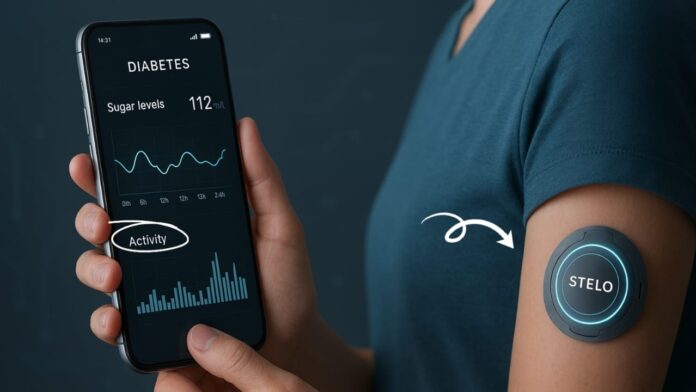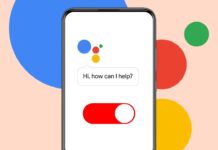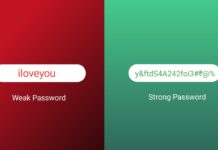
Apps and Wearables to Control Diabetes are powerful health tools today. Such Apps manage sugar levels without painful finger pricks. These devices also track meals, exercise, stress, and sleep.
Apps share instant reports with patients, families as well as doctors worldwide. With smart technology, diabetes care is less stressful as well as more effective. Here, I will explain the best apps and wearables available.
Oura Ring and Stelo Biosensor for Diabetes Control
The Oura Ring is a smart wearable device. It tracks heart rate, sleep cycles, stress as well as your daily activity. The Oura app serves you detailed health reports as well as daily routine data or insights. A unique feature is the Readiness Score each morning that ranges between 0 and 100 points. It shows how well your body recovered overnight.
The Oura Ring does not track glucose directly. But it integrates with Stelo Biosensor, a glucose monitoring system. It creates a complete health picture for patients. The Oura tracks lifestyle patterns, while Stelo monitors sugar changes. Together, they give real-time insights into body reactions.
The Stelo device, developed by Dexcom, is very small. It is pain-free and about the size of a coin. It measures sugar every 15 minutes without finger pricks. Each sensor lasts 15 days before replacement is required. The Stelo app records sugars, meals, and activities daily. Alerts notify users when levels rise or fall suddenly.
This wearable reduces anxiety about unexpected sugar spikes. For example, a simple walk with a dog may drop sugar quickly. With Stelo, patients notice such patterns instantly. They can plan meals and activities more effectively. Finger pricks are avoided, and daily management becomes easier.
Cost is important for many patients worldwide. Oura Ring starts at $349 with $6 monthly subscription. Stelo costs around $50 per device, nearly $1200 yearly.
Though expensive, this combination improves A1C and reduces complications. Insurance might cover prescription-only Dexcom devices, which is cheaper.
Oura plus Stelo integration also motivates lifestyle adjustments. Eating heavy dinners or late snacks lowers recovery scores.
Alcohol before bed delays sugar recovery at night. By seeing this data, patients adopt healthier routines naturally. The combination of wearables and apps builds accountability.
Top Apps and Wearables to Control Diabetes
There is no single best app for diabetes. Each patient has different needs, goals, and preferences. Some want only sugar tracking. Others want full meal guidance, exercise logs, and reminders. Below are the most effective apps available globally.
1 Gluroo
Gluroo helps families and groups manage diabetes together. It allows real-time sharing of sugar levels across devices. Friends and family can track progress through the GluCrew system. Features include reminders, alerts, chat logging, and supply tracking. It also supports food scanning with pictures for easy logging.
2 Glucose Buddy Diabetes
Glucose Buddy has been the top diabetes app for years. It records blood sugar, insulin, meals, and exercise activities. A special Meal IQ explains food’s impact on blood sugar.
The app also has a 12-week education program. Premium users receive A1C calculators and advanced trend graphs. It connects with Apple Health and Dexcom devices easily.
3 MySugr
MySugr is playful yet powerful for type 1 diabetes. It offers carb counting, sugar tracking, and bolus dose estimates. Patients receive weekly, monthly, and yearly reports automatically. The app syncs with glucose monitors and uploads data for doctors. Fun reminders and rewards make diabetes care less stressful.
4 BEAT Diabetes
BEAT Diabetes is simple and great for beginners. It explains what foods to avoid and what to eat. The app provides healthy meal plans and fitness suggestions. Motivational texts and pocket guides help newly diagnosed patients. First available on Android, now it also runs on iPhone.
5 Diabetes:M
Diabetes:M provides insulin calculators, reminders, and blood sugar trend graphs. It integrates with fitness apps and even smartwatches. Subscription users can create multiple profiles for families. The app helps track how food and lifestyle affect sugar.
6 Health2Sync
Health2Sync allows detailed blood sugar logging with notes and photos. Users can record mood, meals, and medication daily.
The app supports sharing with doctors and family members. It also records weight, blood pressure, and A1C data. Premium membership costs $2.99 monthly with more report features.
7 OneTouch Reveal
OneTouch Reveal works with OneTouch meters directly. It automatically highlights blood sugar trends for patients. Push notifications alert users when levels go out of range. Healthcare teams can log in to check history anytime.
8 UndermyFork
UndermyFork connects meal tracking with continuous glucose data. It helps patients calculate better time in range results. The app integrates directly with Dexcom CGM systems. Food photos are logged with blood sugar responses. This helps patients visualize how meals affect health.
Other Useful Diabetes Apps
- BlueStar: FDA-approved app with real-time coaching and lab data.
- Fooducate: Focused on nutrition, with barcode scanning and diet tips.
- My Diabetes Diet & Meal Plan: Over 1,000 diabetic-friendly recipes with grocery lists.
- Glooko: Collects data from glucose meters, pumps, and wearables in one place.
Why Apps and Wearables to Control Diabetes Are Essential
Managing diabetes requires balance between food, medicine, and exercise. Mistakes can lead to dangerous sugar spikes or drops. Apps and wearables reduce these risks through instant data reports. They also provide reminders, guidance, and long-term analysis.
The Oura Ring with Stelo helps patients see full patterns. Food, sleep, and activity combine to show sugar changes. Gluroo allows family support through real-time updates. MySugr helps type 1 patients count carbs quickly. BEAT Diabetes guides beginners step by step.
Another benefit is easier doctor consultations. Patients can export data directly from apps. Doctors review graphs, reports, and trends over weeks or months. This helps improve treatment plans for better sugar stability. Patients feel more in control of their progress.
Although some wearables are costly, they prevent serious complications. Hospital visits and treatments are more expensive long-term.
Affordable apps like Health2Sync or UndermyFork make management accessible worldwide. Free versions already provide valuable support for many patients.
Technology has transformed diabetes care into something proactive. Patients no longer guess after eating meals. Finger pricks become optional with continuous sensors.
Motivation increases when patients see positive changes daily. With consistent use, sugar levels improve, and life becomes healthier.
As We Conclude
Apps and Wearables to Control Diabetes are revolutionizing healthcare worldwide. From Oura Ring and Stelo sensors to apps.
Choosing the right app or wearable depends on personal needs. With these tools, diabetes becomes manageable, safer, and easier every single day.







